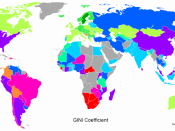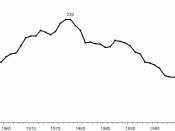TANF and MOE Programs: How They Support Our Needy Families and Youth South Carolina is using $8 million to start an after-school program for at-risk school students. Wisconsin will be spending $15 million over two years on services to low-income at-risk youth with the goals of preventing welfare dependency and teen pregnancy and improving social, academic and employment outcomes. Los Angeles is using $13.5 million to provide summer jobs to low-income youths. All of these efforts are using a relatively new funding source, Temporary Assistance for Needy Families, to support services to at-risk youth. Many youth development, education and employment programs address the goals of the 1996 welfare law, and states or counties could commit TANF funds for such programs.
The 1996 welfare law created a new federal block grant, TANF, to replace Aid to Families with Dependent Children (AFDC). Each state gets an annual block grant that is generally based upon federal spending for the state for AFDC and a set of related programs in the early 1990's.
In order to avoid a federal fiscal penalty, a state must also spend at least 80 percent (or 75 percent if the state meets federal participation requirements) of the funds that the state was spending in 1994 for AFDC and a set of related programs. The funds that states spend in order to draw down their federal allocations are called Maintenance-of-Effort (MOE) funds.
Welfare caseloads have dropped dramatically in most states since the early 1990's, freeing up funds that previously would have been spent for cash assistance. While the total annual TANF block grant plus the amount states are obligated to spend totals $27 billion, states spent only $14 billion on TANF cash assistance in 1998. TANF and state MOE funds can be spent on a wide variety of...


